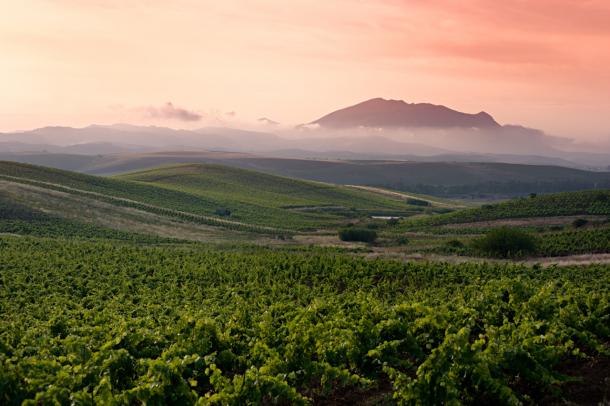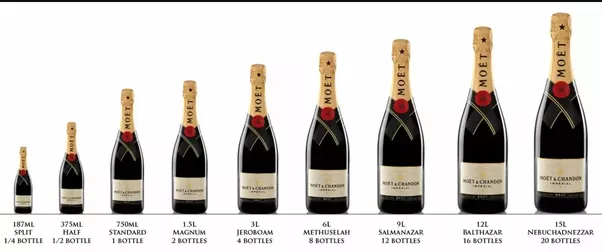Okay, so you’ve guzzled all the seltzer you can… maybe beer isn’t quenching your thirst anymore… perhaps you’re tired of pretending to love hard kombucha… possibly you just want to understand the hype your wine friends are always talking about. Regardless of your motives, it got you here (and we congratulate you!)
Welcome newbies! This is How to Like Wine 101– we’re running through our favorite beginner-friendly wines so you can enter the world of wine on the right foot. For this article, we’re skipping all your mainstay grape varieties and heading straight into the cool stuff that got us hooked on vino in the first place!
Start Sweet: Moscato d’Asti
If you’re wine-curious but weary about dipping your toes into the dry and bold– a nice bottle of Moscato d’Asti could be your best bet. This is sweet, slightly sparkling, and we would argue one of the most approachable wines there is.
Hailing from the enchanting region of Piedmont in northwest Italy, this charming vino is primarily produced in the provinces of Asti, Alessandria, and Cuneo. Known for its lively and fruity character, Moscato d’Asti is made from the Muscat Blanc grape, which thrives in the region’s sunny vineyards and rolling hills. It’s a pale straw color with gentle bubbles. Moscato d’Asti often boasts heavy fruits on the nose like fresh peaches, Meyer lemon, pear, and orange blossoms that follow onto the palate.
Why do beginners to wine often fall head over heels for Moscato d’Asti? Well, it’s one of the most grape-juicy wines you can get. Think: adult juicebox. Moscato d’Asti’s gentle sweetness and lower alcohol content make it a great choice for those who prefer a lighter, more playful sip. Whether you’re enjoying it as an aperitif, pairing it with a fresh fruit salad, or simply toasting to good times with friends, Moscato d’Asti is the perfect companion for celebrations and everyday indulgence.
Something Funky Fresh: Gewürztraminer
You can’t say it three times fast (“ga-VERTZ-trah-mee-ner”), but if you do you might just summon Michael Keaton in a striped suit.
This is one of the “noble grapes,” hailing from Germany and grown across the foothills of the Alps. Gewürztraminer has become a beloved choice for beginners embarking on their wine journey. Alsace, nestled in northeastern France, is another spot where this charming grape variety thrives. With its cool climate and well-drained soils, it provides the perfect conditions for Gewürztraminer to flourish.
Gewürztraminer has been dubbed “the grown-up version of Moscato” by Wine Folly, (though we would argue that calling Moscato juvenile is a bit of a disservice). But there are many similarities between the two varieties. Gewürztraminer can be made in a sweet and fruity style like Moscato, but it has higher alcohol content and lower acidity– making it more of a sipper than a guzzler.
Gewürztraminer does great with spicy Sichuan or Thai food. We would even pair it with a saucy spicy tuna poke bowl.
Common flavors are lychee, grapefruit, fresh orange, mango and summer melon. On the nose, its summer florals like rose and star jasmine, ginger, smoke, and baking spices. These captivating aromas are what truly set Gewürztraminer apart. This is exceptionally drinkable for novice wine drinkers and experts alike.
Crisp & Refreshing: Dry Riesling
This crisp and refreshing white wine is most commonly grown in cool-climate regions such as Germany, Austria, and the Finger Lakes region of New York. You’ll often encounter zesty flavors of lime, lemon, and grapefruit with floral aromas and hints of green apple, beeswax, and even a touch of minerality.
With its vibrant acidity and balanced dryness, dry (read: not sweet) riesling pairs beautifully with a wide range of dishes, from seafood to hot chicken sandwiches, to spicy Asian cuisine. We like to recommend this to beginners because of its balance– and it offers some complexity not usually present in sweet-style wine without sacrificing approachability. Look for bottles labeled “Kabinett” or “Trocken” to know you’re getting a dry wine.
Vibrant, Zesty, Approachable: California Pinot Gris
Pinot Gris, AKA Pinot Grigio, is most commonly grown in the sun-kissed vineyards along the cool coastlines of California. California Pinot Gris showcases a unique character that reflects the region’s terroir. When you sip on a glass of California Pinot Gris, you’ll be greeted with flavors of jasmine, peach, lemongrass, and citrus. It’s fresh, crisp and acidic– expect to encounter bright notes of lemon and lime, coupled with hints of juicy pear and ripe melon. Pair it with creamy pasta, fresh salads, and lemony grilled salmon or chicken.
California Pinot Gris offers a gentle introduction to acidic, dry styles with its fruit-forward profile and smooth texture.
Naturally Bubbly: Pétillant Naturel
New to wine, but still love beer and kombucha? This is the one for you.
Meet pétillant naturel, or what the cool kids call “pét-nat.” This natural bubbly is making waves in the wine world, and it’s sure to impress your hipster friends. Hailing from various regions across the globe, including France, Italy, and the USA, this sparkling wine is loved for its refreshing effervescence and rustic character.
Pét-nat is made using the ancient méthode ancestrale, which captures the wine’s natural bubbles in the bottle during its primary fermentation. No secondary fermentation is necessary for these bubbles, and no disgorgement either! This means that the yeast stays in the bottle, resulting in a cloudy, funky finish. It’s the beer of the sparkling wine world, it’s even sealed with a crown cap!
These can be red, rosé, or white, but we recommend whites and rosés for beginners. When it comes to tasting notes, pétillant naturel wines offer vibrant citrus, crisp green apples, and juicy berries. This wine’s laid-back and unpretentious vibe resonates well with wine novices, making it a go-to choice for those looking to explore the world of bubbles without any fuss.
Bubbly Red (!?): Lambrusco
Looking for an approachable, bubbly red? Say hello to Lambrusco!
Hailing from the beautiful vineyards of Emilia-Romagna in Italy, Lambrusco is a sparkling red wine that comes in both sweet and dry varieties. The four most common grapes used to make the style are: Maestri, Marani, Montericco, and Salamino. The blend will determine the sweetness level of the final product.
Lambrusco doesn’t have the best reputation among wine connoisseurs, some of which have labeled the style a “cheap red fizz.” But we aren’t writing this one off– Lambrusco is delicious, and that’s all it needs to be. If you’re new to reds, start with a light-bodied Lambrusco and work your way toward the heavier stuff as your palate gets used to tannins and bolder flavors.
Commonly grown in the picturesque Emilia-Romagna of northeast Tuscany, Lambrusco is known for its refreshing and lively character. You can find Charmat and méthode ancestrale Lambrusco. Charmat-crafted Lambrusco will result in a cleaner finish, and méthode ancestrale will be cloudy and a bit funkier (like pét-nat.) The flavors vary depending on style, but it’s usually fruity with notes of berries and dark cherries– it’s great with charcuterie boards loaded up with salami, coppa, and rich cheeses.
Our Choice for Vino Italiano: Barbaresco
Barbaresco is made with 100% Nebbiolo grapes, made from grapes grown in and around the village of Barbaresco in the Piedmont region of Italy. In the past decade, Barbaresco has exploded in popularity, but if you can get your hands on it, drink it. Known for its approachable nature, Barbaresco offers a perfect introduction to elegant age-worthy wine.
It is often associated with Barolo, a Nebbiolo from the Piedmont region of Italy. But Barbaresco is much more approachable, offering a lighter palate and feminine character. When it comes to tasting notes, Barbaresco brings ultra ripe red fruits like cherries and raspberries accompanied by hints of earthiness and subtle spice. This is the boldest wine on our beginners list, but it has much more gentle tannins than other Nebbiolos, making it the perfect intro to robust reds.
Get that touch of Italian charm and start talking wine like a pro with some Barbaresco in your glass. After a bottle of this, you might just be an intermediate wine drinker– Huzzah!
In Conclusion
Wine can be intimidating, but it doesn’t have to be. Whether you’re turning a friend toward the wine-side or trying to expand your palate with some vino, these wines are a great place to start. And when you’re ready to start stocking up your cellar, head to Last Bottle to shop our deal of the day and you’ll be drinking like a sommelier in no time.













